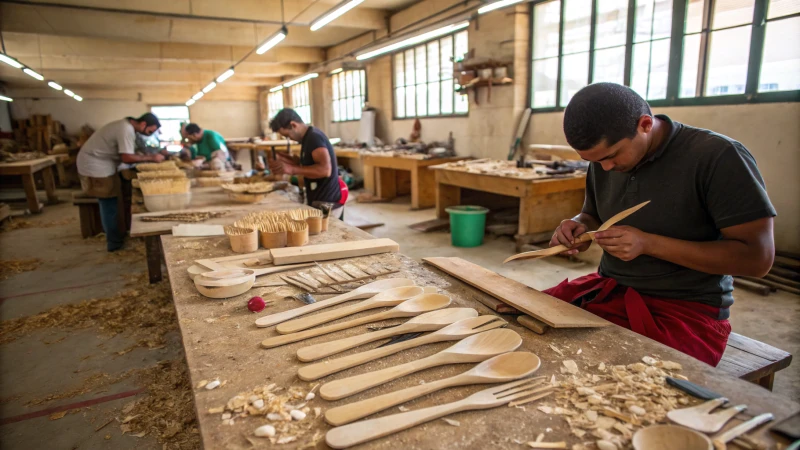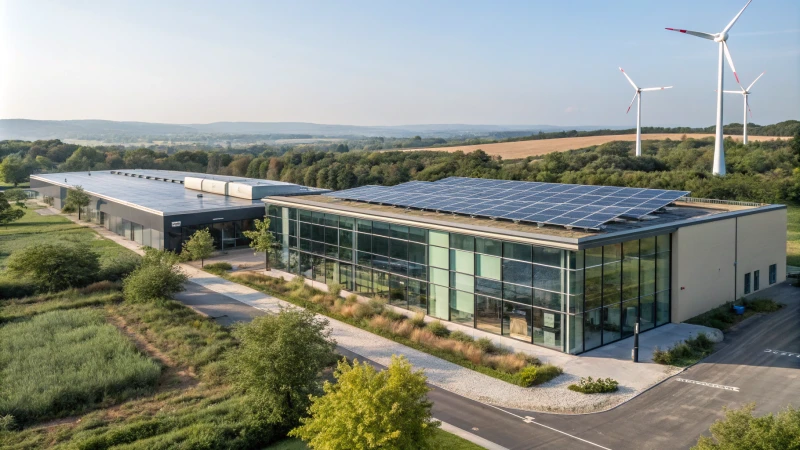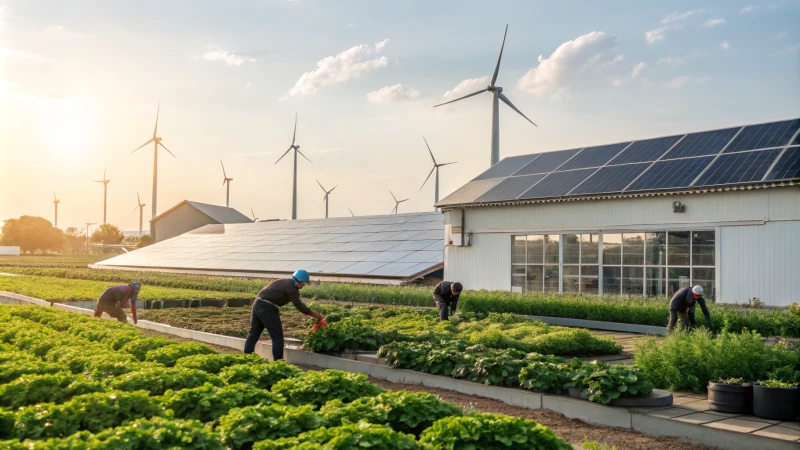
Ever wondered why people are so fascinated by how their disposable wooden cutlery is made?
Consumers are drawn to the production process of disposable wooden cutlery because it aligns with their values of sustainability and environmental responsibility. From sourcing sustainable materials to eco-friendly manufacturing, each step ensures minimal environmental impact, appealing to those committed to a greener lifestyle.
Diving into this topic reminds me of a time when I found myself really thinking about my own choices. I had always been an advocate for eco-friendly living, but it wasn't until I visited a local craft fair that I truly appreciated the effort behind sustainable products. Watching artisans work with raw materials and hearing them passionately talk about their craft was eye-opening. It struck me how each step—from sourcing the wood responsibly to using techniques that minimize waste—contributed to a product that wasn't just functional, but also carried a story of care and responsibility.
This same intrigue now extends to many consumers who are eager to know that their everyday items, like wooden cutlery, contribute positively to the planet. By understanding the production process, they feel more connected to the products they choose, knowing they are making a tangible difference in the environment. It's not just about what we use, but how it came to be—a narrative that speaks volumes in today's eco-conscious world.
Consumers prefer wooden cutlery for its biodegradability.True
Wooden cutlery is biodegradable, aligning with eco-conscious values.
Plastic cutlery has a lower environmental impact than wooden.False
Plastic cutlery is not biodegradable, increasing environmental impact.
How Does Sustainable Raw Material Sourcing Impact Consumer Choices?
Imagine standing in a store, pondering which product to buy, and realizing your choice could help the planet. That's the power of sustainable sourcing.
Sustainable raw material sourcing sways consumer decisions by enhancing brand image, aligning with eco-friendly values, and ensuring transparency in production, which fosters loyalty and appeal.

The Role of Transparency in Consumer Trust
Picture this: you're deciding between two products and one of them clearly outlines its sourcing practices1. That's the one I'd trust more. Today, shoppers crave transparency about where and how materials are sourced. Companies that share their sustainable strategies gain a competitive edge. It’s like having a detailed map that guides consumers through each stage, from harvesting to transportation, clearly:
| Stage | Description |
|---|---|
| Harvesting | Sustainable logging practices |
| Processing | Eco-friendly manufacturing techniques |
| Transportation | Reduced carbon footprint through efficient logistics |
The Appeal of Eco-Friendly Certification
Remember the relief when you see an "organic" or FSC2 label on a product? That little symbol tells you it's a safe choice for the environment. Certifications offer that assurance and help brands reach markets focused on ethical consumption. They also act as marketing tools, reinforcing a brand's commitment to sustainability and directly influencing eco-conscious purchasing decisions.
Consumer Demand for Sustainability Narratives
Ever felt moved by a brand's story about how they empower local communities or use innovative eco-friendly technology? These narratives are not just stories; they’re powerful tools that enhance brand image. Sharing sustainability stories3 from the production chain captivates audiences and can be effectively conveyed through interactive content. By integrating testimonials or multimedia elements, brands vividly depict their environmental contributions, fostering deeper consumer connections.
Aligning Products with Eco-Conscious Values
There's a certain satisfaction in buying products that reflect our values, right? When brands prioritize sustainable raw material sourcing, they align themselves with these values, boosting their products' appeal. Eco-conscious buyers cherish products demonstrating a tangible commitment to reducing environmental impact, leading to increased brand loyalty.
Impact on Brand Reputation and Market Position
Think about the brands you admire—are they leaders in sustainability? Those that invest in sustainable sourcing not only influence individual purchase decisions but also enhance their reputation. By maintaining high standards, brands position themselves as market leaders, attracting attention and potential partnerships. This can be explored further in a line chart illustrating how sustainable practices drive brand growth.
Aligning business operations with sustainability not only meets current consumer demand but also prepares brands for future market trends driven by climate-conscious buyers. Innovating and adapting keeps brands relevant and competitive in an ever-evolving market landscape.
Transparency in sourcing builds consumer trust.True
Providing clear sourcing information enhances consumer trust and loyalty.
Eco-friendly certifications have no impact on sales.False
Certifications like FSC influence eco-conscious buyers, boosting sales.
How Do Eco-Friendly Manufacturing Practices Influence Consumer Interest?
Ever wondered why eco-friendly products are flying off the shelves? It’s all about how sustainable practices capture our hearts and wallets. Let me share how.
Eco-friendly manufacturing practices play a pivotal role in capturing consumer interest by aligning with growing environmental awareness. These practices not only boost brand appeal but also enhance customer loyalty and can lead to increased sales by attracting eco-conscious consumers.

The Impact of Sustainable Production on Consumer Choices
Incorporating eco-friendly manufacturing processes not only fulfills a brand's commitment to sustainability but also resonates with the modern consumer's values. When companies adopt green methods such as reducing carbon emissions, utilizing renewable energy, and sourcing sustainable materials, they tap into a powerful consumer trend4 that values environmental responsibility.
How Consumers Respond to Eco-Friendly Brands
Many consumers are willing to pay a premium for products that are sustainably produced. According to studies, there's an increasing segment of eco-conscious consumers who actively seek out and support brands that demonstrate commitment to the environment5. This preference is evident across various demographics and industries.
| Consumer Type | Percentage Willing to Pay More |
|---|---|
| Millennials | 73% |
| Generation Z | 67% |
| Overall Consumers | 55% |
The Role of Storytelling in Sustainability
Brands that effectively communicate their sustainability efforts through transparent storytelling can further enhance their consumer appeal. By sharing stories of eco-friendly initiatives like reducing waste or supporting local communities, companies can build trust and foster loyalty among their customers.
For instance, a brand producing wooden cutlery might highlight its sustainable sourcing practices, detailing how responsibly managed forests contribute to their raw material supply. Such narratives not only engage consumers6 but also differentiate the brand in a competitive market.
Aligning Product Life Cycle with Consumer Expectations
From production to disposal, ensuring each stage of a product's life cycle is environmentally friendly can significantly influence consumer interest. Companies must evaluate their entire supply chain to identify areas where they can improve sustainability.
For example, using biodegradable packaging or implementing closed-loop recycling systems can enhance the product's appeal to eco-conscious buyers. Brands that provide comprehensive sustainability reports often see higher levels of consumer trust and engagement.
In conclusion, while eco-friendly manufacturing practices are increasingly crucial in shaping consumer interest, they also present opportunities for brands to innovate and lead in sustainability.
Eco-friendly brands can charge higher prices.True
Studies show consumers pay more for sustainably produced items.
Storytelling doesn't affect consumer trust in eco-brands.False
Transparent storytelling enhances consumer trust and loyalty.
How does transportation affect the eco-friendliness of wooden cutlery?
Have you ever wondered how your choice of wooden cutlery can impact the planet, even before it reaches your table?
Transportation significantly influences the eco-friendliness of wooden cutlery by impacting the carbon emissions linked with moving these products from forests to consumers. Opting for sustainable transport methods can greatly decrease the environmental footprint.

The Carbon Footprint of Logistics
It’s fascinating to think about how a simple item like wooden cutlery7 has a journey filled with carbon considerations—from the lush forests where the wood is sourced to our dining tables. When I first started exploring this, I realized that every mile traveled adds up in emissions.
- Local Sourcing: Using locally sourced wood can drastically cut down on emissions compared to importing it from faraway lands. It’s like choosing to walk to your neighborhood grocery store instead of driving miles away.
- Eco-Friendly Transport: Did you know that switching to electric vehicles or even trains for transporting goods can halve the emissions compared to traditional diesel trucks? It's these little choices that stack up to make a big difference.
| Transportation Method | Emissions (g CO2/km) |
|---|---|
| Diesel Trucks | 160 |
| Electric Vehicles | 80 |
| Rail Transport | 50 |
Impact on Supply Chain
When I think about supply chains, it feels like piecing together a puzzle where each piece must fit just right to support sustainability. Efficient logistics8 aren’t just about cost-saving—they're about reducing our carbon footprints.
- Consolidated Shipping: Combining shipments or planning optimized routes can seem like small tweaks, but they make a huge impact by decreasing trips and emissions.
- Optimized Routes: Advanced route planning technologies help in reducing travel distances and fuel consumption.
The Role of Packaging in Transport
I remember a time when I overlooked packaging, but now I see its critical role in sustainability. Lightweight packaging is not just practical; it saves fuel during transport! Plus, using recyclable materials doesn’t just stop at being trendy—it builds a circular economy, ensuring nothing goes to waste.
- Lightweight Packaging: Reduces fuel consumption during transport.
- Recyclable Materials: Supports a circular economy, reducing overall waste.
For more insights into how transportation methods influence eco-friendliness, explore articles on sustainable logistics9 and their role in reducing environmental impacts.
Local sourcing of wood reduces carbon emissions.True
Using locally sourced wood minimizes transportation distances, cutting emissions.
Diesel trucks produce less CO2 than electric vehicles.False
Diesel trucks emit 160g CO2/km, while electric vehicles emit 80g CO2/km.
How Do Sustainability Stories from the Production Chain Enhance Brand Appeal?
Imagine being captivated by the story of how your favorite product is made, from the roots in the earth to the moment it lands in your hands.
Sustainability stories from the production chain enhance brand appeal by showcasing eco-friendly practices transparently, building consumer trust and differentiating the brand in a crowded market. These narratives resonate with the growing environmental consciousness among consumers.

Unveiling the Power of Transparency
When I first delved into understanding how brands build trust, it became clear that transparency is a game-changer. Imagine a company that doesn't just sell products but also invites you into their world, showing every step of their process. This openness reveals their dedication to ethical practices and boosts their authenticity.
Take a brand committed to sustainable sourcing, for instance. They might share how their raw materials are responsibly harvested from managed forests. Picture the journey of these materials, detailing sustainable harvesting techniques and eco-friendly transportation. Such stories don't just highlight environmental stewardship; they weave a narrative that customers can genuinely connect with.
Differentiation in a Saturated Market
In today's market, standing out is everything. I once compared conventional and sustainable practices side by side, and it was eye-opening. Here's a quick look at what that might entail:
| Aspect | Conventional | Sustainable |
|---|---|---|
| Sourcing | Non-renewable sources | Renewable, certified sources |
| Manufacturing | High carbon footprint | Low carbon footprint |
| Disposal | Non-biodegradable | Biodegradable |
These comparisons make it crystal clear why choosing eco-friendly products is beneficial not just for the planet but also for conscious consumers.
Aligning with Consumer Values
I've noticed that more and more people, myself included, are driven by values rather than just price or product quality. When a brand shares its sustainable journey, it strikes a chord with eco-conscious customers like me, who prioritize making sustainable choices10.
Imagine engaging consumers with stories about how their purchase helps reduce plastic waste or supports local communities. Such narratives create an emotional bond, fostering loyalty and repeat business.
Engaging Through Digital Storytelling
Digital platforms are a playground for creativity when it comes to sharing production stories. I've been drawn into short videos and infographics that depict each stage of a product's lifecycle in a captivating way. They make complex messages simple and engaging.
Interactive elements, such as quizzes on sustainability impacts11, further involve users, turning them from passive viewers into active participants in the brand’s sustainability story.
Building a Community Around Shared Goals
Sharing stories isn't just about delivering a message—it's about building a community. Imagine being part of a group where everyone shares their experiences with products or joins in sustainability initiatives. This creates a sense of belonging and purpose.
Brands can foster such communities by hosting online forums where customers discuss sustainable living or collaborate on eco-friendly projects. It's all about creating a shared space united by common values and goals.
Transparency boosts brand authenticity.True
Sharing sustainability stories builds trust and elevates brand authenticity.
Sustainability stories have no impact on consumer loyalty.False
Sustainability narratives resonate with eco-conscious consumers, enhancing loyalty.
Conclusion
Consumers are increasingly interested in the production of disposable wooden cutlery due to its sustainable sourcing, eco-friendly manufacturing, and the transparency that aligns with their environmental values.
-
Transparency builds trust and loyalty by showing ethical practices. ↩
-
FSC certification boosts credibility among eco-conscious consumers. ↩
-
Stories engage consumers and strengthen brand connection. ↩
-
This link explores current consumer trends towards eco-friendly products, offering insights into how businesses can align with these preferences. ↩
-
Discover how businesses showcase their environmental commitment, fostering trust and loyalty among eco-conscious consumers. ↩
-
Learn strategies for effectively engaging consumers with compelling sustainability stories that enhance brand loyalty. ↩
-
Explore how sourcing wood locally minimizes transportation distances, reducing carbon emissions and supporting local economies. ↩
-
Learn about logistics practices that minimize carbon footprints, enhancing eco-friendly supply chains. ↩
-
Understand how adopting sustainable logistics practices contributes to overall environmental conservation efforts. ↩
-
Understand the growing trend of consumers prioritizing sustainable choices, aligning your brand strategy accordingly. ↩
-
Discover innovative ways brands engage audiences with interactive content, enhancing consumer understanding and involvement. ↩

